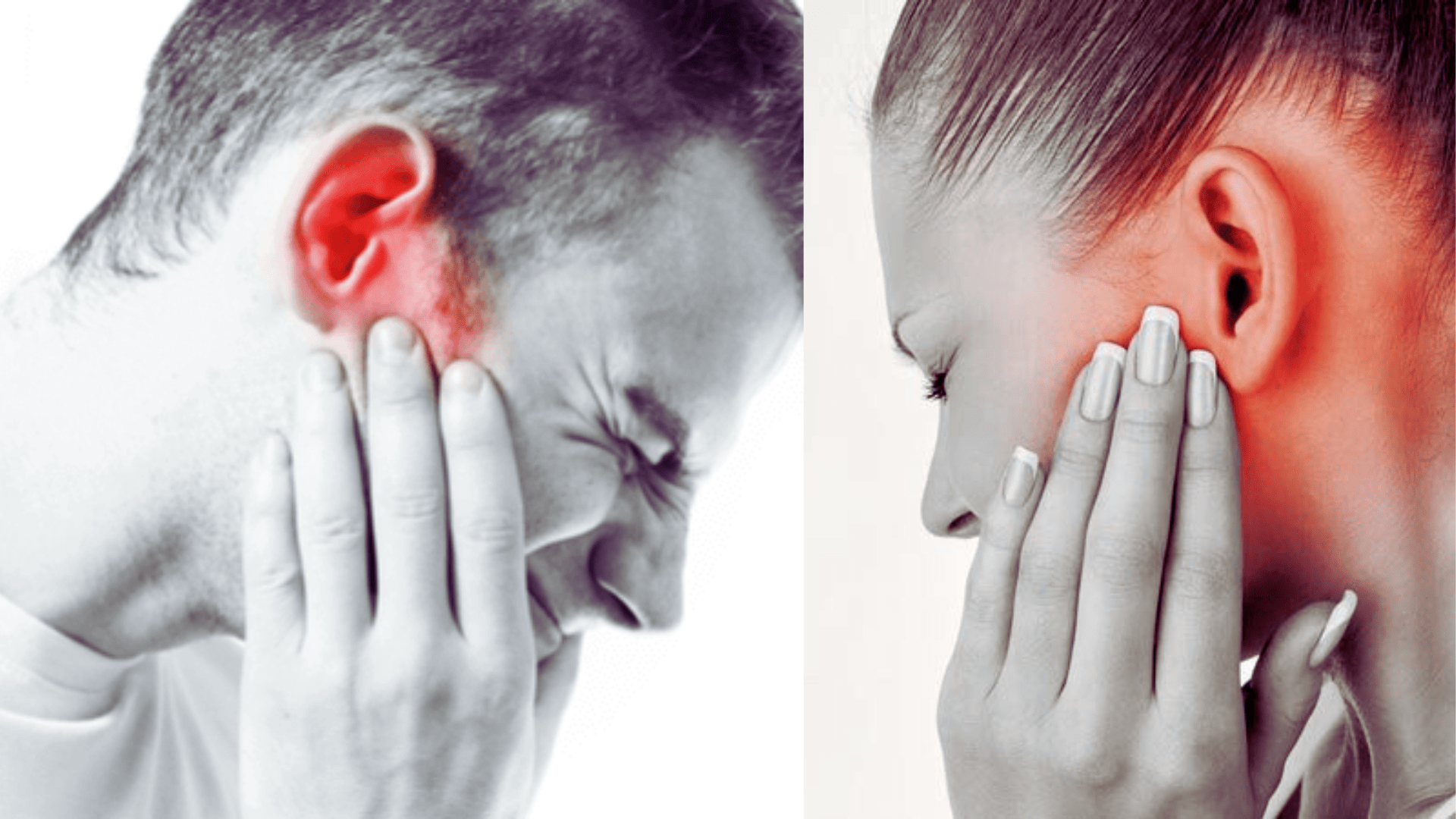Ear infections, particularly those affecting the middle ear, are primarily caused by bacteria or viruses. These infections often follow other illnesses like colds, flu, or allergies, which can lead to swelling and congestion in the nasal passages, throat, and Eustachian tubes. Symptoms of an ear infection can include pain in the ear, fever, vomiting diarrhea (especially in babies), and trouble hearing. Treatment may vary depending on the age of the patient and the severity of the infection, ranging from watchful waiting to antibiotic therapy.
The Root of the Problem
Bacteria and Viruses
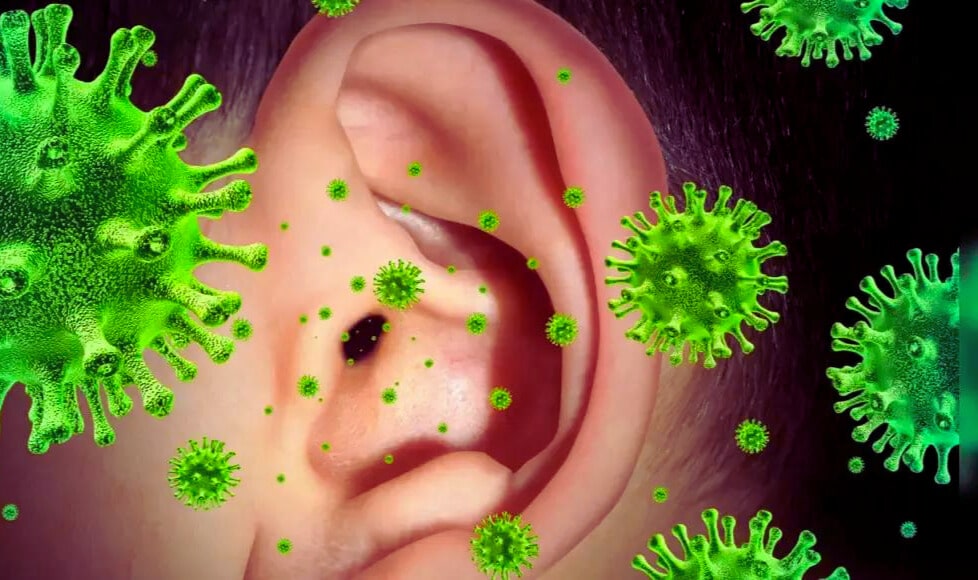
Ear infections, particularly in the middle ear, can be caused by both bacteria and viruses. These infections often arise following another illness, such as a cold, flu, or allergy, which leads to congestion and swelling of the nasal passages, throat, and eustachian tubes. The role of viruses and bacteria in ear infections is significant, with evidence suggesting that viruses not only contribute to the development of these infections but can also exacerbate inflammation in the middle ear and impact the effectiveness of antibiotics. While symptoms of viral and bacterial ear infections are similar, a higher fever might indicate a bacterial infection. However, fevers can also occur with viral infections. Identifying whether an ear infection is viral or bacterial is crucial, as it influences treatment decisions. Antibiotics are effective against bacterial infections but not viral ones, which means treatment for viral ear infections focuses more on relieving symptoms.
Allergies

Allergies can indeed be a significant factor in the development of frequent ear infections. When allergy symptoms trigger, such as sneezing, nasal congestion, and throat irritation, they can lead to the swelling of the nasal passages, throat, and Eustachian tubes. This swelling can disrupt the normal drainage of fluid from the middle ear, causing fluid buildup. When this fluid becomes trapped, it provides an ideal environment for bacteria and viruses to grow, leading to an ear infection. This mechanism explains how allergic reactions can directly contribute to the occurrence of ear infections, especially in individuals prone to allergies.
Water Trapped in the Ear

Water trapped in the ear, commonly after swimming, can lead to a type of ear infection known as “swimmer’s ear” or otitis externa. When water remains in the ear canal, it can create a moist environment that promotes the growth of bacteria. These bacteria can multiply, leading to infection. Swimmer’s ear is different from middle ear infections that affect the space behind the eardrum, as it involves the outer ear canal. Preventing water from remaining trapped in the ear is key to avoiding this infection. Methods such as tilting the head to allow water to drain out, using a towel to gently dry the ears, or employing over-the-counter ear drops designed for swimmers can be effective.
The Common Cold and Sinus Infections
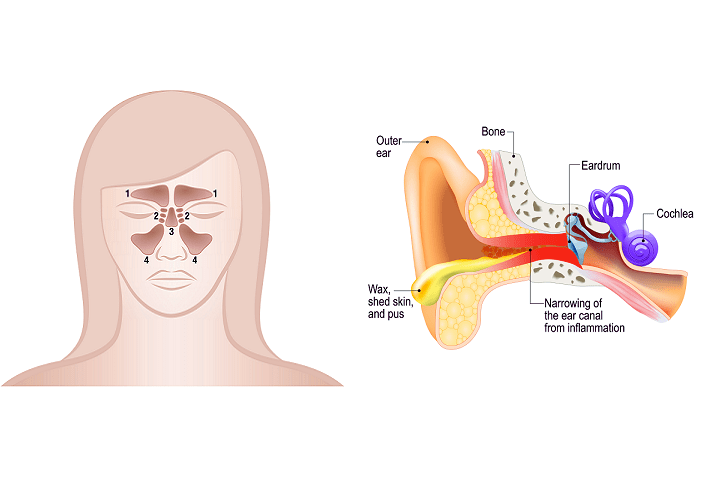
The common cold and sinus infections often precede ear infections, especially middle ear infections (otitis media). Colds, caused by viruses, can lead to inflammation and congestion of the nasal passages and throat. This congestion can block the Eustachian tubes, which connect the middle ear to the throat, trapping fluid in the middle ear and creating an environment conducive to bacterial growth, resulting in ear infections. Similarly, sinus infections (sinusitis) can exacerbate or contribute to this process by increasing mucus production and causing additional blockages of these pathways, further promoting ear infections. Effective management of colds and sinus infections is crucial in preventing the development of secondary ear infections.
Identifying Different Types
Outer Ear Infections
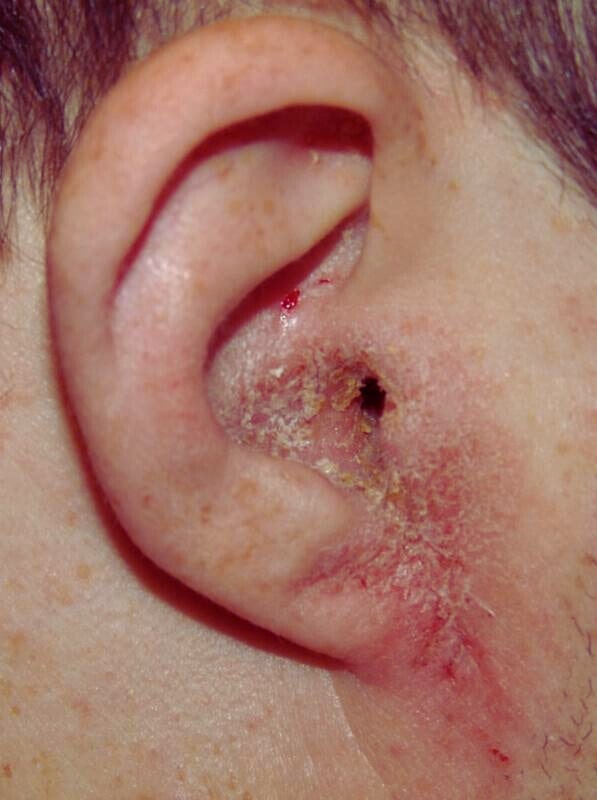
Outer ear infections, also known as otitis externa or swimmer’s ear, occur when the ear canal becomes inflamed, often due to water remaining in the ear after swimming, creating a moist environment where bacteria or fungi can thrive. Symptoms can include ear pain, itching, redness, and discharge. Treatment typically involves keeping the ear dry, avoiding inserting anything into the ear, and using prescribed ear drops that may contain a combination of antibiotics to fight infection and steroids to reduce inflammation. The outer ear canal needs to be cleaned professionally by a healthcare provider to ensure ear drops can reach the affected areas effectively.
Middle Ear Infections
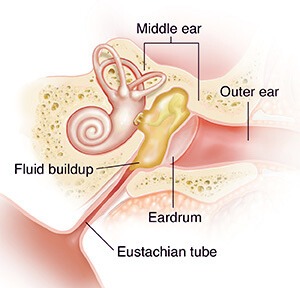
Middle ear infections, also known as otitis media, typically occur when a virus or bacteria cause fluid build-up behind the eardrum, leading to inflammation, redness, and often pain in the ear. Symptoms can include ear pain, difficulty hearing, fever, and in some cases, fluid drainage from the ear. These infections are more common in children but can affect adults as well. Treatment varies depending on the severity and includes pain management, antibiotics (for bacterial infections), and in some cases, surgical intervention to drain fluid if infections are frequent.
Inner Ear Infections
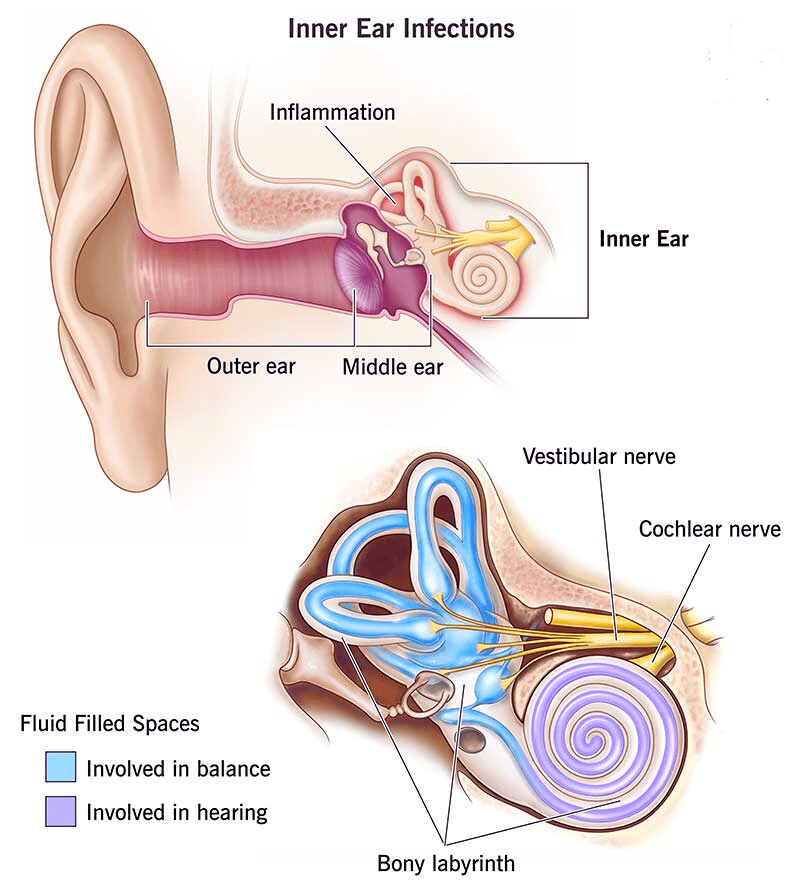
Inner ear infections, also known as otitis interna or labyrinthitis, can cause symptoms such as dizziness, nausea, hearing loss, and imbalance. These infections are often viral but can also be bacterial. Symptoms can include vertigo (a sensation of spinning), hearing loss in one ear, tinnitus (ringing in the ear), and a feeling of fullness or pressure in the ear. Treatment may involve medications like prochlorperazine for dizziness and nausea, antiemetics for vomiting, and corticosteroids to reduce inflammation.
Signs You Might Have an Ear Infection
Pain in the Ear
Pain in the ear can often indicate an ear infection, particularly if accompanied by other symptoms. Common signs of a middle ear infection (otitis media) include:
- Pain in one or both ears: Ear pain is a primary symptom of middle ear infections.
- Drainage from the ear: The presence of fluid or pus draining from the ear suggests an infection.
- Muffled hearing: Infection can cause fluid buildup, leading to hearing difficulties.
- Sore throat: Sometimes, an ear infection can also affect the throat, causing discomfort or soreness.
It’s important to consult a healthcare professional for accurate diagnosis and appropriate treatment if you experience these symptoms.
Hearing Loss
Hearing loss can often be a sign of an ear infection, especially when it occurs with other symptoms. Here’s how an ear infection might affect your hearing:
- Temporary Hearing Loss: Many individuals with a middle ear infection experience temporary hearing loss due to fluid buildup behind the eardrum. The average hearing loss in ears with fluid is around 24 decibels, akin to wearing earplugs.
- Pain and Dizziness: Alongside hearing loss, symptoms like pain, dizziness, and a sensation of the ear being full or clogged can indicate an ear infection.
- Vertigo and Balance Issues: Specifically, inner ear infections can lead to severe symptoms such as vertigo and balance problems, further suggesting a connection between ear infections and hearing issues.
Hearing loss caused by ear infections is typically temporary, but it’s crucial to seek medical advice for appropriate treatment to prevent potential long-term damage.
Fluid Drainage
Fluid drainage from the ear is a common indicator of an ear infection, particularly otitis media (middle ear infection). This condition can lead to the accumulation of fluid behind the eardrum, which, if the eardrum ruptures, may result in drainage from the ear. Here’s what to look out for:
- Pus or Cloudy Fluid: This type of drainage is the most common sign of an ear infection, occurring due to a tear in the eardrum as a result of the infection.
- Causes of Fluid Discharge: The primary cause behind fluid discharge from the ear is an ear infection. A buildup of fluid behind the eardrum characterizes a middle ear infection, also known as otitis media.
- Symptoms Accompanying Ear Discharge: In addition to drainage, symptoms such as pain in one or both ears, muffled hearing, and potentially a sore throat can occur, signaling a middle ear infection.
If you experience these symptoms, particularly fluid drainage accompanied by ear pain or hearing loss, it’s important to consult a healthcare professional for proper diagnosis and treatment.
Fighting Back
Prevention Tips
Preventing ear infections involves measures that reduce the risk of common illnesses and promote overall ear health. Here are key tips to consider:
- Wash Hands Frequently: Regular handwashing with soap and water helps prevent the spread of germs that can lead to ear infections.
- Avoid Cold and Flu: Since colds can lead to ear infections, it’s important to take steps to avoid catching colds and other illnesses, such as getting flu shots and practicing good hygiene.
- Stay Warm in Cold Weather: Keeping your ears warm and dry during cold weather can help prevent infections that often follow colds or flu.
Implementing these preventive measures can help minimize the risk of developing painful ear infections, particularly in more susceptible children.
Treatment Options
Treatment for ear infections (Otitis Media) includes several options based on the severity and type of infection:
- Observation: Many ear infections resolve without treatment. Health professionals might recommend a wait-and-see approach for certain cases, especially in children over 6 months with mild symptoms.
- Antibiotics: Antibiotics are effective for acute otitis media. They’re often prescribed when the infection is severe or the patient is under 6 months old. However, overuse can lead to resistance, so they should be used judiciously.
- Pain Management: Pain relievers like acetaminophen (Tylenol) or ibuprofen (Advil, Motrin) can be used to relieve pain. Always consult a healthcare provider for the appropriate dosage for children.
- Ear Drops: For some types of ear infections, especially those involving the outer ear, topical antibiotic drops may be recommended, sometimes with steroids to reduce inflammation.
It’s essential to consult with a healthcare provider to determine the most appropriate treatment plan based on individual cases.
Seeking Professional Help
When experiencing ear, nose, or throat issues, knowing when and whom to seek for professional help is crucial:
- Start with Your Primary Care Doctor: For initial symptoms or concerns related to your ear, nose, or throat, begin by consulting your primary care physician. They can provide initial assessment and treatment or refer you to a specialist if necessary.
- Seeing an ENT Specialist: If your condition involves more specific or severe issues like persistent ear infections, hearing loss, or sinus problems, an otolaryngologist (ENT specialist) is the go-to professional. ENTs diagnose and treat a wide range of conditions related to the ear, nose, and throat.
- Getting a Referral: Ask your primary care physician for a recommendation to a reputable ENT specialist. Additionally, check with your insurance provider for covered ENT specialists to ensure the visit is within your plan.
Wrapping It Up
Ear infections can be a real pain, both literally and figuratively. Understanding their causes, identifying the signs, and knowing when to seek help can make a big difference. Keep your ears happy, and they’ll keep you in tune with the world around you.
Read also: What Is Considered a Fever?
FAQs
Q: Can ear infections go away on their own?
Yes, some mild ear infections can resolve without treatment. But it’s always a good idea to consult a doctor if you’re unsure.
Q: Are ear infections contagious?
No, ear infections themselves are not contagious, but the colds and viruses that can lead to them are.
Q: How can I prevent ear infections in children?
Ensure they practice good hand hygiene, avoid secondhand smoke, and stay up to date on their vaccines.
Q: Can adults get ear infections too?
Absolutely. While more common in children, adults can and do get ear infections.
Q: Is swimming safe if I frequently get ear infections?
Yes, but it’s wise to wear earplugs or a swimming cap to keep your ears dry.
